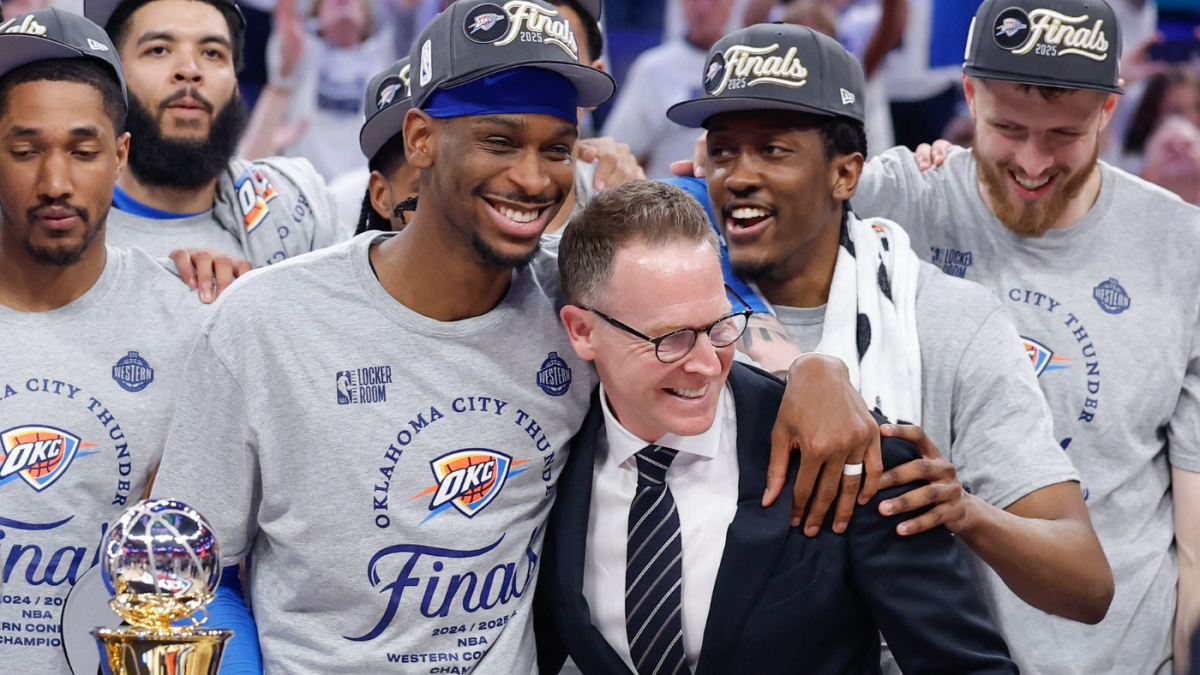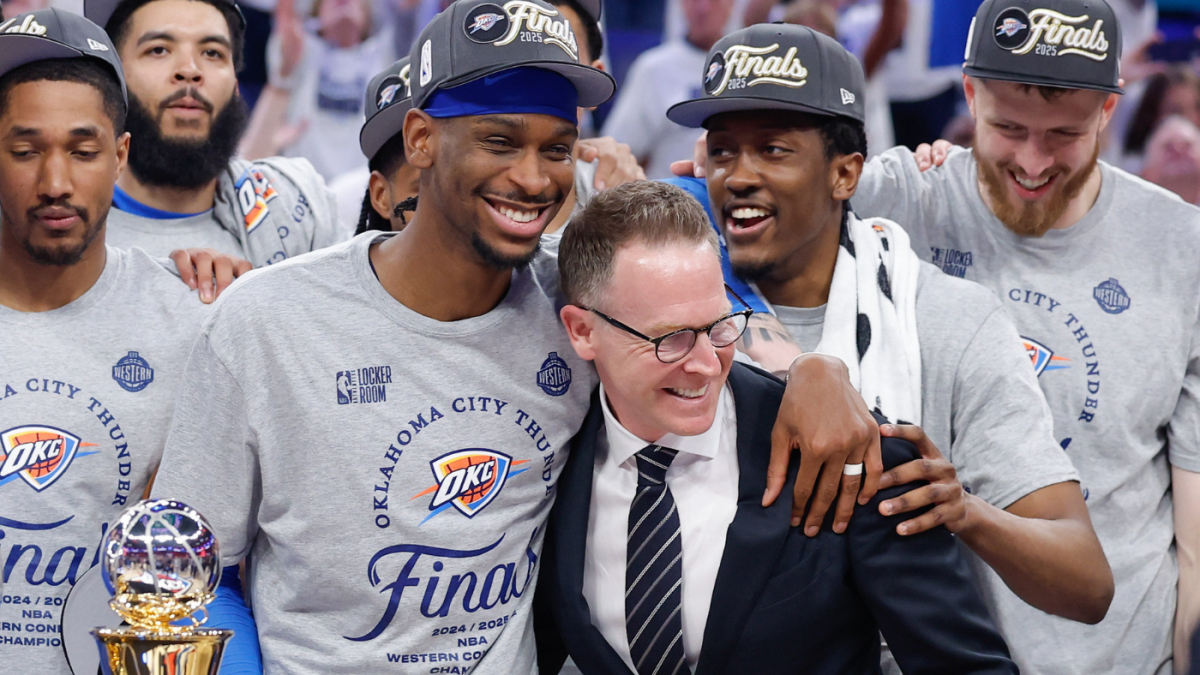The NBA has long been celebrated for its athleticism, excitement, and competitive spirit, but in recent years, the league has faced growing concerns about player injuries. The frequency, severity, and impact of these injuries on team performance and player careers have become a significant topic of discussion. Among the voices advocating for change is Sam Presti, the general manager of the Oklahoma City Thunder. Presti has been vocal about the issue, highlighting not just the physical toll but the broader implications for the league. His candid comments about injuries, particularly Achilles tendon ruptures, underscore a fundamental challenge the NBA must confront: an increasing intensity of the game paired with evolving physical demands and risks.
The Changing Nature of the NBA Game and Its Toll
Sam Presti has observed that the modern NBA has grown exponentially more demanding physically. According to him, “playing one NBA game today is almost like playing two a decade ago.” This statement implies that the pace, physical contact, and intensity of games have escalated, placing greater stress on players’ bodies. As athletes push the limits of endurance and explosiveness, injury risks rise correspondingly.
This intensification is not merely anecdotal. Analytics and player tracking data support the notion that players cover more ground, engage in more high-impact plays, and frequently endure back-to-back games with minimal rest. The compressed schedules sometimes exacerbate these factors, leading to cumulative fatigue and a higher chance of serious injuries. For instance, the average NBA player runs approximately 2.5 miles per game, a significant increase from previous decades. Additionally, the rise of advanced analytics has led to a more strategic approach to the game, often requiring players to engage in more physical and high-intensity plays.
Achilles Injuries: A Disturbing Trend
Among the injuries that have drawn Presti’s critical attention are Achilles tendon ruptures. Historically, an Achilles injury has been one of the most devastating for athletes, often ending or drastically altering careers. Presti highlighted that excluding Kevin Durant — who notably made a remarkable comeback — very few NBA players return to their pre-injury performance levels after such trauma.
His frank stance was that downplaying the severity of these injuries is “almost insulting,” not as a rebuke but as a call to acknowledge the reality. This perspective is crucial because it shifts the conversation away from blame or negligence towards seeking solutions that prioritize player health and sustainable careers. The Achilles tendon is particularly vulnerable due to the explosive nature of modern basketball, which involves frequent jumping, quick direction changes, and sudden stops. The incidence of Achilles injuries has been on the rise, with notable players like Rudy Gay, DeMarcus Cousins, and Klay Thompson all suffering career-altering Achilles ruptures in recent years.
Organizational and League-wide Implications
The comments from Presti resonate beyond the medical and player wellness arenas. As the Thunder’s GM, he must navigate the balance between winning now and ensuring the longevity of his roster. The NBA’s broader structure — scheduling, recovery protocols, and player workload monitoring — comes into focus. When a GM of Presti’s stature emphasizes the gravity of injuries, it pressures stakeholders to rethink policies that may contribute to chronic issues.
Presti’s remarks also implicitly suggest that the league cannot simply “put its head in the sand.” Ignoring injury trends or assuming they are an unavoidable part of the game is inadequate. Instead, a proactive, collaborative approach involving athletic trainers, medical professionals, team executives, and league officials is needed. The NBA has already taken steps in this direction, such as implementing load management policies and reducing the number of back-to-back games. However, more comprehensive measures are necessary to address the root causes of injuries.
The Role of Management in Mitigating Injury Risks
Sam Presti’s career as a GM is distinguished not only by his ability to build competitive teams but also by managing the health and progression of talent. His experience drafting and developing MVP-caliber players like Kevin Durant, Russell Westbrook, and James Harden gave him unique insights into how injuries can stall or derail promising careers.
Effective management involves recognizing the signals of fatigue, advocating for judicious rest periods, and utilizing medical advances in prevention and rehabilitation. Presti’s acknowledgment of the injury challenge demonstrates a broader responsibility that front offices must embrace — viewing player health as integral to team success, not just a medical issue. For example, the Thunder have been proactive in implementing advanced recovery protocols, such as cryotherapy and hydration monitoring, to ensure their players are in optimal condition.
Looking Forward: Potential Solutions and Changes
Addressing the injury problem requires structural changes. Several routes could be explored:
– Revising Scheduling: Limiting back-to-back games and easing travel burdens can provide players better recovery windows. The NBA has already made strides in this area, but further reductions in the number of back-to-back games and more strategic scheduling could significantly reduce injury risks.
– Enhanced Medical Protocols: Implementing standardized health monitoring and recovery practices across all teams. This includes regular medical check-ups, advanced imaging techniques, and personalized recovery plans for each player.
– Investing in Research: Encouraging biomechanical and physiological research to understand injury mechanisms better. Collaborations with universities and research institutions can lead to breakthroughs in injury prevention and treatment.
– Player Education: Informing athletes about signs of overuse and the importance of preventive care. Players must be educated on proper nutrition, hydration, and rest to maintain their health and performance.
Sam Presti’s comments serve as a catalyst to this dialogue, elevating the urgency for systemic reforms. His perspective offers a vital lens for stakeholders aiming to balance excellence on the court with responsible stewardship of athlete health.
Conclusion: Confronting the Realities to Protect the Game
Sam Presti’s candid reflections on the state of NBA injuries cut through the usual rhetoric, highlighting a pressing issue that affects players, teams, and fans alike. The increasing intensity of gameplay, exemplified by how physically demanding each game has become compared to a decade ago, demands a reevaluation of how the league supports its athletes.
Acknowledging the severity of injuries such as Achilles ruptures is not about pointing fingers but about fostering an environment where the physical and mental well-being of players is paramount. As the NBA continues to evolve as a global sports powerhouse, confronting these challenges head-on will be key to sustaining the sport’s competitive integrity and the well-being of those who play it. Sam Presti’s perspective offers a vital lens for stakeholders aiming to balance excellence on the court with responsible stewardship of athlete health. By addressing these issues proactively, the NBA can ensure that the game remains thrilling and competitive while prioritizing the health and longevity of its athletes.












